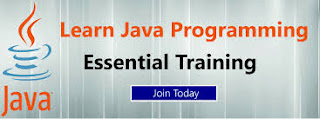Need and Importance of Training
Training of employees takes place after
orientation takes place. Training is the process of enhancing the skills,
capabilities and knowledge of employees for doing a particular job. Training
process module the thinking of employees and leads to quality performance of
employees. It is continuous and never ending in nature .
Importance
of SummerTraining
Training is crucial for organizational
development and success. It is fruitful to both employers and employees of an
organization. An employee will become more efficient and productive if he is
trained well.
Training is
given on four basic grounds:
1)
New candidates who join an
organization are given training. This training familiarizes them with the
organizational mission, vision, rules and regulations and the working
conditions.
2)
The
existing employees are trained to refresh and enhance their knowledge.
3)
If any
updating and amendments take place in technology, training is given to cope up
with those changes. For instance, purchasing new equipment, changes in technique
of production, computer impairment. The employees are trained about use of new equipment and work methods.
4)
When promotion
and career growth becomes important. Training is given so that employees are
prepared to share the responsibilities of the higher level job .
The benefits of training can be summed up as:-
- Improves morale
of employees- Training helps the employee to
get job security and job satisfaction. The more satisfied the employee is
and the greater is his morale, the more he will contribute to
organizational success and the lesser will be employee absenteeism and
turnover.
- Less
supervision- A well trained employee will be well
acquainted with the job and will need less of supervision. Thus, there
will be less wastage of time and efforts.
- Fewer
accidents- Errors
are likely to occur if the employees lack knowledge and skills required
for doing a particular job. The more trained an employee is, the less are
the chances of committing accidents in job and the more proficient the
employee becomes.
- Chances of
promotion- Employees acquire skills and efficiency during training. They become
more eligible for promotion. They become an asset for the organization.
- Increased
productivity- Training improves efficiency and productivity of employees. Well trained
employees show both quantity and quality performance. There is less
wastage of time, money and resources if employees are properly trained.
Ways/Methods
of Training
Training
is generally imparted in two ways:
- On the job
training- On the job training methods are those
which are given to the employees within the everyday working of a concern.
It is a simple and cost-effective training method. The in proficient as
well as semi- proficient employees can be well trained by using such
training method. The employees are trained in actual working scenario. The
motto of such training is “learning by doing.” Instances of such on-job
training methods are job-rotation, coaching, temporary promotions, etc.
- Off the job
training- Off the job training methods are those in which training is provided
away from the actual working condition. It is generally used in case of
new employees. Instances of off the job training methods are workshops,
seminars, conferences, etc. Such method is costly and is effective if and
only if large number of employees have to be trained within a short time
period. Off the job training is also called as vestibule training, i.e.,
the employees are trained in a separate area (may be a hall, entrance,
reception area, etc. known as a vestibule) where the actual working
conditions are duplicated.
Objectives of
Employee Training Programmes
- To prepare
employees to meet the varying and challenging needs of the job and
organization.
- To provide
knowledge and skills to new entrants and to help them to perform their
role and job well.
- To coach
employees for more complex and higher level jobs.
- To educate
employees new and innovative ways and techniques of performing job.
Steps in
Employee Training Programme
Training programme involves the following
steps:
- Identifying the
training needs- The training needs of each employee should be identified. Programmes
should be developed that are best suited to their needs.
- Prepare the
trainer- The trainer must do his home work well. He should know both what to
teach and how to teach. Time management is required by the trainer.
Training should be delivered in such a manner that the trainee should not
lose the interest in the job.
- Prepare the
trainee- The trainee should remain active during training. He should know that
why is he being trained. He should put across the trainer questions and
doubts. The trainee should be put at ease during the training programme.
- Explain and
demonstrate the operations- The trainer should explain the logical sequence of the job.
The trainee should perform the job systematically and explain the complete
job he is performing. His mistakes should be rectified and the complex
step should be done for him once. When the trainee demonstrates that he
can do the job in right manner, he is left to himself. Through repetitive
practices, the trainee acquires more skill.
- Follow up and
feedback- The trainee should be given feedback on how well he performed the job.
He should be asked to give a feedback on the effectiveness of training programmer.
Methods of Summer Training Employees at
Workplace
Training help employees enhance their capabilities and acquire new learning, skills and
knowledge. Training help employees come up with unique and innovative ideas,
meet targets within the desired time frame and make them efficient resources
for the organization.
One
needs to understand that lot of time, money and energy go in designing training
programs for employees. Managers need to understand where all their team
members are lacking and need improvement. One needs to be very clear how
training programs would benefit the employees. Managers need to sit with human
resource professionals and design specific training programs keeping in mind
the needs and requirements of employees. Training programs conducted just for
the sake of it yield no results.
Training
programs should not only be designed for existing employees but also for new
candidates.
Let us go through various training methods at the
workplace:
a) Induction Training - Induction training is often given to new employees to make them
feel a part of the organization. How do you think an individual can perform if
he/she is not familiar with the policies and rules and regulations of the
organization? You can’t expect an individual to deliver results on the first
day itself. You need to welcome your employees well for them to feel motivated
and comfortable. Induction programs need to be designed sensibly. Too much of
information on the day of joining will frighten the new employee and believe
me, he/she will not come from the next day onward. Induction programs help new
employees to get acquainted with the work culture and fellow workers. Induction
programs need to be short, crisp but informative.
b) Refresher Training - Refresher training are designed for existing employees to refresh
them and also help them acquire new skills and technologies to keep pace with
the changing times. Such training programs prepare employees for more
responsible positions.
c) On the Job Training - On the job training are given to employees at the workplace
itself by their superiors and Bosses. Managers ought to sit with their team
members on a regular basis, train them on new technologies, skill sets to help
them cope with the changes. On the job trainings are given to employees along
with their jobs itself and make them capable to handle bigger responsibilities.
On the
Job trainings are imparted by any of the following methods:
- Coaching - Coaching is also defined as learning by
doing and handling various ongoing projects. In this method of training,
team manager assigns certain job responsibilities to team members,
monitors their performance, points out their mistakes, provides them
feedbacks and also suggestions for improvement.
- Job Rotation - In this type of training, employees
move from one position to another, thus acquiring new skills and learning.
Job rotation acquaints individuals with newer roles and challenges and
makes them capable of performing any type of task.
d) Off the job Training - Off
the job training are given outside the workplace.
Off the
job training can be provided by any of the following methods:
- Seminars/Conferences - Seminars and conferences are effective
when training needs to be given to a larger audience. Relevant
information, latest developments, new technologies and case studies are
discussed on a common platform to acquaint employees with new skill sets.
- Simulation
Exercise - Simulation exercises train the employees in an artificial environment
which closely resembles the employee’s actual working conditions.
- Vestibule Training - In vestibule training, employees practice work on the
instrument/equipment which they would be using in future when they would
be actually working.
Benefits to Join Our
Institute
1 Our institute
provide training as well as off role job training.
2 Our institute provide job oriented courses like AutoCAD,
Solidworks ,Industrial Automation.
3 Our institute also provide Summer training and entrepreneurship program .
4 Our institute provide assignment and project related to
study.
5 Infrastructure are good in all aspect and providing the 100%
education quality .
6 Relation between trainer and students should be eco
friendly.




Comments
Post a Comment